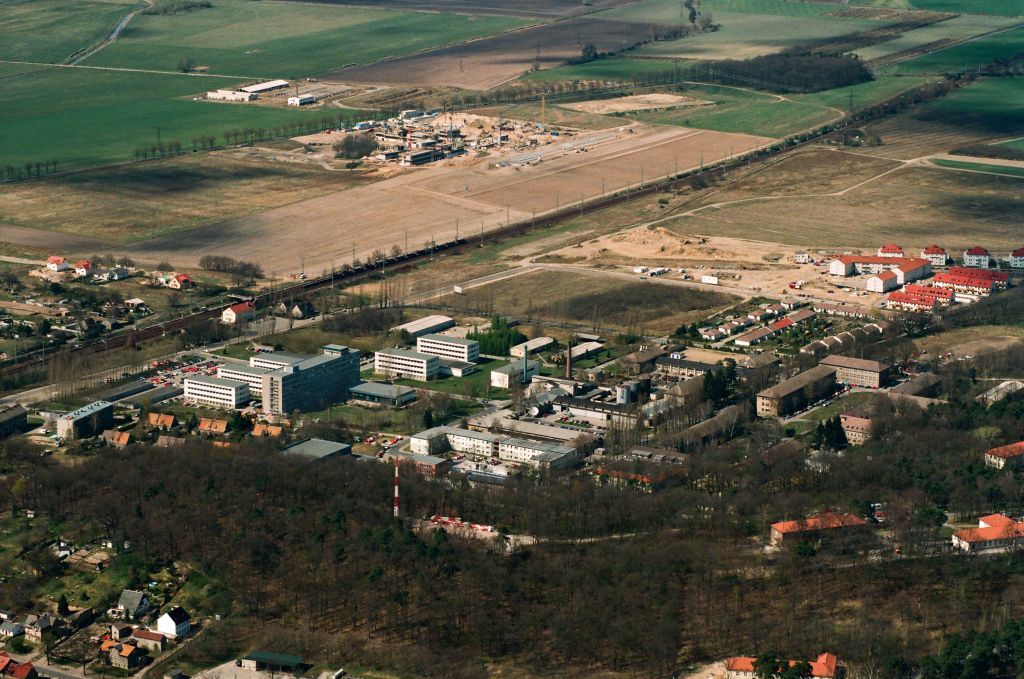
History of the Park
Standortmanagement Golm GmbH was founded in 2008 as a wholly-owned subsidiary of GO:INcubator GmbH. The goal was to further expand the research park, which at that time was known under the name of Wissenschaftspark Potsdam-Golm. The interests of all institutions at the park were bundled together to more effectively increase awareness of the park beyond the borders of Brandenburg. In January 2018, the new stakeholders, the state capital Potsdam (51%) and the University of Potsdam (49%), acquired the parent company of Standortmanagement Golm GmbH and set new priorities.
The Potsdam Science Park echoes a long and varied history. The historical university buildings reflect on the numerous institutions that were located here in the past. The General Wever Barracks, built in 1935, housed the “Luftnachrichtenabteilung Oberbefehlshaber der Luftwaffe” (Air News Department, Commander-in-Chief of the Air Force) beginning in 1943. The largest part of the “Abwehr”, the military secret service of the Wehrmacht, was also located in Golm. In 1951, the ” Schule des Ministeriums für Staatssicherheit” (School of the Ministry of State Security) was established, a central training facility for employees of the Ministry of State Security of the GDR, which existed under various names until 1989, most recently as the “Juristische Hochschule Potsdam” (Potsdam University of Law) (Source: www.uni-potsdam.de/de/zeitzeichen/standorte/golm.html)
After the reunification of Germany in July 1991, the newly founded University of Potsdam took over the properties in Golm. Parts of the humanities department were first settled there, and later the departments of human sciences, mathematics and natural sciences. Around the same time in 1992, strategic political decisions promoted the establishment of large research societies in the former East. The Max Planck Institute for Molecular Plant Physiology was the first non-university institution to begin operations in Golm in 1994. Two further Max Planck Institutes, Colloids and Interfaces and the Institute of Gravitational Physics (Albert Einstein Institute), followed in 1999. In the years 2000 and 2006, the Fraunhofer Institute for Applied Polymer Research and the Fraunhofer Institute for Biomedical Engineering, which is now called the Institute for Cell Therapy and Immunology, were established.
To attract start-ups and founders, the GO:IN Innovation Center opened in 2007. In the following years, the Park’s infrastructure was further expanded, including: a kindergarten, student residences, shopping facilities, a conference centre and several extensions to the local research institutes. In 2015, the Brandenburg State Archives moved into the Science Park.
Since then, Potsdam Science Park has grown into Brandenburg’s largest and most innovative location for research and business. In the current expansion phase, more than 30,000 square metres of laboratory and office space are being created, and a further ten hectares are being developed on the Technology Campus for research and production.
Contact Person
If you have any questions about the history of the park, please do not hesitate to contact me.

Anja Lauterbach
Office Management & Site Development
anja.lauterbach@potsdam-sciencepark.de +49 331 237 351 135